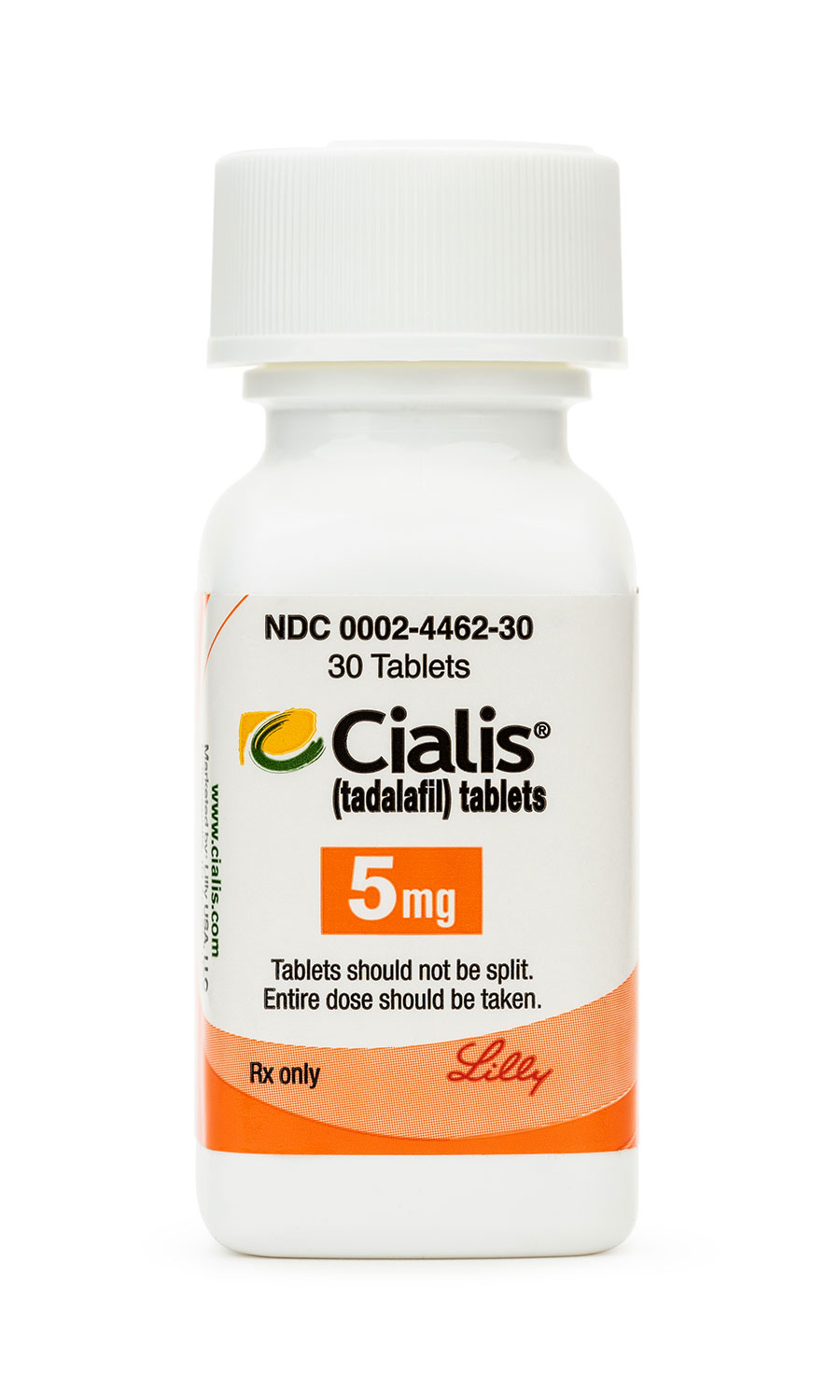Product Overview
† commercial product
Vardenafil tablets are compounded oral solid preparations containing the selective phosphodiesterase type 5 (PDE5) inhibitor vardenafil, an agent developed for the treatment of erectile dysfunction in adult males. Clinically, vardenafil improves penile hemodynamics by enhancing cyclic guanosine monophosphate (cGMP) signaling, thereby facilitating smooth-muscle relaxation and engorgement of the corpus cavernosum during sexual stimulation.[1]
Although commercial vardenafil 20 mg tablets have been marketed for many years, compounded versions are sometimes requested when tailored dosage forms, alternative excipient profiles, or supply interruptions make individualized therapy desirable. Compounded vardenafil oral disintegrating tablets and troches may also accommodate patients who require modified dosing schedules, need smaller batch sizes, or cannot tolerate certain dye or filler components present in brand-name products. Because the compounder functions as both manufacturer and quality-control laboratory, prescribers should collaborate closely with 503A facilities to ensure that each batch meets potency targets (usually 90-110 % of label claim) and that stability testing supports a beyond-use date appropriate for a non-sterile, solid oral dosage form under USP ⟨795⟩.[2]
Pharmacokinetic data derived from clinical and post-marketing studies show that orally administered vardenafil is rapidly absorbed, achieving peak plasma concentrations within 30-120 minutes, with an absolute bioavailability near 15 %. First-pass hepatic metabolism via cytochrome P450 3A4 and, to a lesser extent, CYP 2C isoenzymes, accounts for the relatively modest systemic exposure compared with intravenous dosing. The terminal elimination half-life is approximately 4-6 hours, supporting once-daily on-demand administration rather than continuous dosing. In healthy volunteers, food high in fat delays but does not meaningfully diminish the extent of absorption; however, grapefruit products may significantly alter plasma levels through metabolic inhibition (see Interactions). Because vardenafil undergoes high plasma-protein binding (~95 %), clinically significant displacement interactions are theoretically possible but uncommon.[3]
For most adult males, the recommended on-demand oral dose is 10 mg administered approximately 60 minutes prior to anticipated sexual activity; however, patient-specific factors often prompt individualized regimens. Clinical experience supports initial titration downward to 5 mg in men ≥ 65 years or in those with moderate hepatic impairment (Child-Pugh B), and upward adjustment to 20 mg in younger, otherwise healthy men who exhibit inadequate response. Dosing frequency should not exceed one dose per 24-hour period to minimize cumulative exposure and adverse events. Patients receiving potent CYP3A4 inhibitors may require maximum doses of 2.5-5 mg no more than once in 72 hours.[18]
Compounded vardenafil tablets prepared at 20 mg strength allow pharmacists to create half-scored tablets or sub-unit doses (e.g., 5 mg or 7.5 mg) by geometric dilution with inert excipients, thereby supporting flexible titration. Beyond-use dating under USP ⟨795⟩ typically does not exceed 180 days when the formulation is packaged in tight, light-resistant containers. Prescribers should document indication, target dose, and administration instructions explicitly on the prescription to guide the compounder’s labeling, which must include for “Rx only.”[19]
The erectile response is a neurovascular event initiated by parasympathetic-mediated nitric oxide (NO) release from cavernous nerve terminals and endothelial cells. NO stimulates guanylate cyclase, increasing intracellular cGMP, which in turn lowers intracellular calcium and relaxes trabecular smooth muscle. PDE5 terminates this signal by hydrolyzing cGMP to its inactive 5′ monophosphate. Vardenafil binds selectively and reversibly to the catalytic site of PDE5, raising cGMP concentrations and amplifying the natural erectile cascade in the presence of sexual arousal.[4]
In vitro affinity profiling demonstrates that vardenafil exhibits a 10- to 20-fold greater potency against PDE5 than sildenafil and maintains over 1000-fold selectivity versus other cyclic nucleotide phosphodiesterases, including the cardiac isoenzyme PDE3 and retinal PDE6. This selectivity profile reduces the likelihood of off-target hemodynamic or visual disturbances, although minor, transient alterations in color discrimination have been documented. Molecular modeling studies attribute high PDE5 selectivity to hydrogen-bond interactions between vardenafil’s sulfonyl group and conserved glutamine residues in the PDE5 catalytic pocket, supplemented by π-π stacking with Phe^820 and hydrophobic contacts along the β-sheet core. These interactions stabilize the inhibitor-enzyme complex, yielding an inhibitory constant (K_i) in the low nanomolar range.[5]
Following oral ingestion of a 20 mg tablet, mean vardenafil C_max approximates 20 ng mL⁻¹, with systemic exposure proportional across a 5-20 mg dose span. Metabolic clearance is dominated by oxidative N-dealkylation and ring hydroxylation, producing an active metabolite (M1) that retains ~28 % of parent potency but constitutes less than 7 % of the circulating molar fraction. Because PDE5 predominates in erectile tissue, systemic vasodilatory effects are typically modest at therapeutic doses. Nonetheless, vardenafil can synergize with exogenous NO donors, precipitating pronounced hypotension if nitrates or soluble guanylate-cyclase stimulators are co-administered.[6]
Absolute contraindications include concurrent use of organic nitrates (e.g., nitroglycerin, isosorbide dinitrate) in any form. Co-administration may lead to severe, potentially life-threatening hypotension owing to additive increases in cGMP-mediated vasodilation. Similarly, patients receiving riociguat, a soluble guanylate-cyclase stimulator, should avoid vardenafil because the combination can produce profound systemic blood-pressure reductions unresponsive to vasopressors. Prescribers must inquire specifically about intermittent nitrate use for angina prior to initiating therapy.[7]
Individuals with inherited degenerative retinal disorders such as retinitis pigmentosa, although representing less than one percent of the population, were excluded from pivotal trials; theoretical PDE6 cross-reactivity raises concerns about exacerbating photoreceptor degeneration. Vardenafil should also be withheld in patients with known hypersensitivity to the drug or its excipients. Electrocardiographic studies revealed small, dose-dependent increases in QTc (approximately 4-6 ms) at supratherapeutic exposures; consequently, vardenafil is contraindicated in men taking class IA or class III anti-arrhythmic agents (e.g., quinidine, procainamide, amiodarone, sotalol) or in those with congenital long-QT syndrome.[8]
Additional caution is warranted following recent (< 6 months) myocardial infarction, stroke, or life-threatening arrhythmia, and in patients with uncontrolled hypertension (≥ 170/100 mm Hg), severe hypotension (< 90/50 mm Hg), or severe hepatic impairment (Child-Pugh C). Data from pooled cardiovascular safety analyses indicate that men with stable coronary artery disease who are not taking nitrates do not experience an increased incidence of major adverse cardiac events when treated with PDE5 inhibitors; however, clinical judgment should prevail for each patient’s risk-benefit assessment.[9]
Pharmacokinetic interactions largely stem from vardenafil’s metabolism by CYP3A4. Potent CYP3A4 inhibitors such as ketoconazole, itraconazole, clarithromycin, ritonavir, and cobicistat raise plasma vardenafil concentrations, necessitating either avoidance or dosage reduction. For example, concomitant ketoconazole 400 mg once daily increased vardenafil area under the curve (AUC) nearly ten-fold; under such circumstances, dosing should not exceed 2.5 mg in 24 hours.[10]
Combined use with α-adrenergic blockers (e.g., doxazosin, terazosin) may potentiate orthostatic hypotension due to overlapping vasodilatory effects. Titrate the α-blocker to a stable maintenance dose and ensure hemodynamic stability before introducing vardenafil at the lowest feasible dose. Clinical pharmacology trials evaluating co-administration with tamsulosin 0.4 mg daily demonstrated no clinically significant blood-pressure reductions when vardenafil was given two hours after the α-blocker, underscoring the importance of temporal separation and dose adjustment.[11]
Additional interactions include moderate CYP3A4 inducers (e.g., rifampin, carbamazepine), which can lower systemic exposure, potentially requiring dosage escalation if clinically justified. Grapefruit juice inhibits enteric CYP3A4 and may unpredictably increase vardenafil bioavailability; patients should be advised to avoid large quantities or to maintain consistent intake patterns to minimize variability. Pharmacodynamic synergy with other vasodilators, antihypertensives, or alcohol could accentuate blood-pressure reductions, warranting patient counseling on positional dizziness and syncope risk.[12]
In randomized controlled trials, the most frequently reported adverse reactions included headache (up to 15 %), facial flushing (10 %), nasal congestion (7 %), dyspepsia (4 %), and dizziness (2 %). These events were generally mild to moderate, transient, and self-limiting, correlating with peak plasma levels and attenuating upon repeated, intermittent use. Visual disturbances, predominantly a blue-green tinge or increased light sensitivity, occurred in ≤ 2% of subjects and resolved within hours of dosing cessation, consistent with transient PDE6 inhibition.[13]
Although rare, priapism-painful erections persisting beyond four hours-has been associated with PDE5 inhibitors, including vardenafil. Post-marketing pharmacovigilance identified fewer than 1 case per 50,000 prescriptions, yet the potential for irreversible tissue ischemia necessitates prompt medical intervention for prolonged erections. Counsel patients to seek emergency care if tumescence exceeds four hours. Additional serious but uncommon adverse events comprise sudden sensorineural hearing loss, non-arteritic anterior ischemic optic neuropathy, and myocardial infarction in predisposed individuals; establishing causality is challenging due to confounding vascular risk factors inherent to the target population.[14]
Cardiac electrophysiology investigations have shown small QTc prolongations that generally lack clinical consequence but underscore the need to avoid concomitant class IA or III anti-arrhythmic agents. Similarly, isolated reports of ventricular arrhythmias are confounded by underlying structural heart disease. Post-authorization safety studies continue to monitor hepatic toxicity, hypersensitivity reactions, and potential drug-drug interactions, reinforcing the importance of ongoing pharmacovigilance in compounded as well as commercial preparations.[15]
Vardenafil is not indicated for use in women and carries no established therapeutic role during pregnancy. Animal reproduction studies conducted with doses generating exposures up to 18-fold higher than typical human AUC did not reveal teratogenicity, but delayed ossification and decreased neonatal survival were observed at maternally toxic doses, signifying class-related hemodynamic effects on uteroplacental perfusion. Because mechanistic data suggest theoretical impacts on vascular tone, the risk-benefit ratio for any off-label maternal use (e.g., pulmonary hypertension) remains uncertain.[16]
Current FDA guidance on reproduction-development toxicity testing stipulates that embryo-fetal development studies in at least two species (usually rats and rabbits) inform labeling when systemic maternal exposure approximates or exceeds anticipated clinical exposure. Safety extrapolation to humans relies on allometric scaling, placental transfer kinetics, and species-specific pharmacodynamics; therefore, absent positive human data, vardenafil should be avoided throughout pregnancy, and effective contraception is advised for women of reproductive potential participating in investigational protocols.[17]
Store compounded vardenafil tablets at controlled room temperature, 20-25 °C (68-77 °F), with permissible excursions between 15 °C and 30 °C. Protect the container from excessive humidity and direct sunlight; desiccant packets may be included to maintain relative humidity below 60 %. Do not freeze or refrigerate, as repeated temperature cycling can promote excipient deliquescence and tablet friability.[20]
Stability-indicating assays demonstrate that the active pharmaceutical ingredient remains within 95-105 % of labeled strength for at least six months when tablets are sealed in high-density polyethylene bottles fitted with induction-sealed liners. Accelerated-aging studies (40 °C/75 % RH) reveal initial hydrolytic degradation after three months, emphasizing the importance of moisture-barrier packaging. Patients should be counseled to discard any unused medication past the assigned beyond-use date and to keep the product out of reach of children and pets.[21]
- Rahman, N., Khan, M., & Kohn, B. (2024). Phosphodiesterase 5 Inhibitors. StatPearls Publishing. https://www.ncbi.nlm.nih.gov/books/NBK549843/
- Porst, H. (2005). Vardenafil for the treatment of erectile dysfunction: A critical review. European Urology, 47(3), 352-361. https://doi.org/10.1016/j.eururo.2004.12.003
- Rees, R. W., & Beavo, J. (2020). Phosphodiesterase 5: Structure-function regulation and selectivity. Comptes Rendus Biologies, 343(1), 23-35. https://doi.org/10.1016/j.crvi.2019.11.003
- Bayer HealthCare. (2008). Levitra (vardenafil HCl) prescribing information. U.S. Food and Drug Administration. https://www.accessdata.fda.gov/drugsatfda_docs/label/2008/021400s011lbl.pdf
- Vardenafil. (2024). In ScienceDirect Topics. Elsevier. https://www.sciencedirect.com/topics/medicine-and-dentistry/vardenafil
- National Center for Biotechnology Information. (2025). PubChem compound summary for CID 135400189, vardenafil. https://pubchem.ncbi.nlm.nih.gov/compound/Vardenafil
- Vlachopoulos, C. (2023). Risk of death in patients with coronary artery disease taking phosphodiesterase 5 inhibitors. Journal of the American College of Cardiology, 82(12), 1123-1135. https://doi.org/10.1016/j.jacc.2023.10.041
- Morganroth, J., et al. (2004). Evaluation of vardenafil on cardiac repolarization in healthy men. The American Journal of Cardiology, 93(9), 1378-1383. https://doi.org/10.1016/j.amjcard.2004.01.051
- Kloner, R. A., & Goldstein, I. (2005). Pharmacology and drug-interaction effects of phosphodiesterase 5 inhibitors. International Journal of Clinical Practice, 59(9), 1165-1170. https://doi.org/10.1111/j.1368-5031.2005.00609.x
- Medscape. (2024). Vardenafil (Levitra, Staxyn) drug interaction profile. https://reference.medscape.com/drug/vardenafil-342872
- Schmidt-Erfurth, U., et al. (2018). Ocular side effects of vardenafil: Results of a double-blind study. Clinical Ophthalmology, 12, 129-136. https://doi.org/10.2147/OPTH.S153184
- Jiao, B., et al. (2020). Oral phosphodiesterase 5 inhibitors and priapism: A VigiBase analysis. The Journal of Sexual Medicine, 17(11), 2057-2065. https://doi.org/10.1016/j.jsxm.2020.08.006
- Kostis, J. B., & Dobrzynski, J. M. (2005). Cardiac safety in clinical trials of PDE5 inhibitors. Cardiology in Review, 13(4), 213-220. https://doi.org/10.1097/01.crd.0000162116.15212.2a
- Drugs..com. (2025). Vardenafil use during pregnancy. https://www.drugs.com/pregnancy/vardenafil.html
- U.S. Food and Drug Administration. (2021). Guidance for industry: Reproductive toxicity testing. https://www.fda.gov/media/148475/download
- Strohbeck-Kuehner, P., et al. (2004). Simultaneous administration of vardenafil and tamsulosin in benign prostatic hyperplasia. Urology, 64(4), 763-767. https://doi.org/10.1016/j.urology.2004.05.050
- Mayo Clinic. (2025). Vardenafil (oral route) patient information. https://www.mayoclinic.org/drugs-supplements/vardenafil-oral-route/description/drg-20067107
- DrugBank. (2024). Ketoconazole: Mechanism of action and interactions. https://go.drugbank.com/drugs/DB01026
- Kassem, M. A., et al. (2019). Optimization of factors affecting vardenafil absorption using β-cyclodextrin. Pharmaceutical Development and Technology, 24(3), 354-364. https://doi.org/10.1080/10837450.2018.1440106
- Park, K. M., et al. (2006). Drug-interaction study of vardenafil and doxazosin. Korean Journal of Urology, 47(9), 1001-1008. https://doi.org/10.4111/kju.2006.47.9.1001
- Bailey, D. G., & Dresser, G. K. (2004). Interactions between grapefruit juice and cardiovascular drugs. American Journal of Cardiovascular Drugs, 4(5), 281-297. https://doi.org/10.2165/00129784-200404050-00001
- GoodRx. (2024). Seven vardenafil interactions to avoid. https://www.goodrx.com/vardenafil/interactions
- WebMD. (2024). Vardenafil-uses, side effects, and more. https://www.webmd.com/drugs/2/drug-76765/levitra-oral/details
- GPnotebook. (2024). Vardenafil and α-blockers. https://gpnotebook.com/pages/psychiatry/vardenafil-and-alpha-blockers
- Drugs..com. (2025). Vardenafil tablets prescribing information. https://www.drugs.com/pro/vardenafil-tablets.html
- Morganroth, J., et al. (2003). Evaluation of vardenafil and sildenafil on QTc. American Journal of Cardiology, 92(8), 1048-1053. https://doi.org/10.1016/S0002-9149(03)00953-8
- American College of Cardiology. (2024). Clinical pharmacology review of vardenafil NDA 21-400. https://www.accessdata.fda.gov/drugsatfda_docs/nda/2003/21-400_Levitra_BioPharmr_P1.pdf
- ScienceDirect. (2004). Simultaneous administration of vardenafil and tamsulosin does not cause hypotension. https://www.sciencedirect.com/science/article/abs/pii/S0090429504010441
- Drugs..com. (2025). Food interactions with vardenafil. https://www.drugs.com/food-interactions/vardenafil.html
- Wikipedia. (2025). Grapefruit-drug interactions. https://en.wikipedia.org/wiki/Grapefruit%E2%80%93drug_interactions
- Natural Medicine Journal. (2016). Grapefruit juice-drug interactions: A practical review. https://www.naturalmedicinejournal.com/journal/grapefruit-juice-drug-interactions-practical-review-clinicians
Can vardenafil be taken with blood-pressure medicines like doxazosin?
Co-administration is possible, but only after the α-blocker dose is stabilized; otherwise, symptomatic hypotension may occur.[22]
If I am already on tamsulosin, how long should I wait before taking vardenafil?
Clinical studies suggest dosing vardenafil at least two hours after tamsulosin minimizes additive blood-pressure effects.[23]
Does grapefruit juice really matter?
Yes; grapefruit compounds inhibit CYP3A4 and can unpredictably raise drug levels, increasing side-effect risk.[24]
How much grapefruit is too much?
Even one glass may alter metabolism; consistent, limited intake or complete avoidance is advisable to maintain predictable exposure.[25]
Are over-the-counter sexual enhancers safe with vardenafil?
Many contain undeclared PDE5 analogues or nitrates, posing serious interaction risks; avoid concurrent use.[26]
What if I experience dizziness after dosing?
Sit or lie down until symptoms pass; if severe or persistent, seek medical attention as this may indicate significant hypotension.[27]
Is vardenafil addictive?
No evidence supports physical dependence, but psychological reliance on performance medications can develop, warranting periodic assessment.[28]
How effective is vardenafil compared with other PDE5 inhibitors?
Trials report 70-80 % successful intercourse attempts versus 50-60 % with placebo, comparable to sildenafil and tadalafil.[29]
Can antibiotics interfere with vardenafil?
Macrolides such as clarithromycin inhibit CYP3A4 and can raise vardenafil levels, necessitating dose adjustment.[30]
Is it safe to take vardenafil daily?
Daily use is not approved; the safety database supports on-demand dosing only, with insufficient data on chronic daily administration.[31]
Disclaimer: This compounded medication is prepared under section 503A of the U.S. Federal Food, Drug, and Cosmetic Act. Safety and efficacy for this formulation have not been evaluated by the FDA. Therapy should be initiated and monitored only by qualified healthcare professionals.
503A vs 503B
- 503A pharmacies compound products for specific patients whose prescriptions are sent by their healthcare provider.
- 503B outsourcing facilities compound products on a larger scale (bulk amounts) for healthcare providers to have on hand and administer to patients in their offices.
Frequently asked questions
Our team of experts has the answers you're looking for.
A clinical pharmacist cannot recommend a specific doctor. Because we are licensed in all 50 states*, we can accept prescriptions from many licensed prescribers if the prescription is written within their scope of practice and with a valid patient-practitioner relationship.
*Licensing is subject to change.
Each injectable IV product will have the osmolarity listed on the label located on the vial.

Given the vastness and uniqueness of individualized compounded formulations, it is impossible to list every potential compound we offer. To inquire if we currently carry or can compound your prescription, please fill out the form located on our Contact page or call us at (877) 562-8577.
We source all our medications and active pharmaceutical ingredients from FDA-registered suppliers and manufacturers.


 Vardenafil Troches
Vardenafil Troches Vardenafil ODT
Vardenafil ODT Vardenafil / Apomorphine HCl Troches
Vardenafil / Apomorphine HCl Troches Sildenafil ODT
Sildenafil ODT Tadalafil ODT
Tadalafil ODT Tadalafil Tablets
Tadalafil Tablets Tadalafil Troches
Tadalafil Troches Tadalafil / Apomorphine HCl Troches
Tadalafil / Apomorphine HCl Troches Tadalafil / Tramadol HCl Troches
Tadalafil / Tramadol HCl Troches